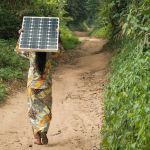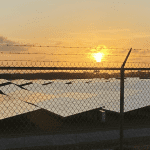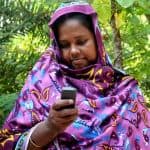The Time is Now for a Renewable Energy Transition in Haiti
The Dominican Republic and Haiti, two countries at opposite ends of the same Caribbean island, are also at opposite ends of the transition to renewable energy. Despite having comparable populations of close to 11 million people, the energy capacity in the Dominican Republic exceeds that of Haiti by a factor of 10 to one. Yet both countries depend significantly on expensive imported fossil fuels, and are looking increasingly to renewable energy sources to meet new demand and reduce energy prices.
Divergent economic performance
Without delving deep into a fascinating and complicated history, a combination of political instability, geographical vulnerability and foreign intervention (among other factors) has led to the divergent economic performance of Haiti and the Dominican Republic. This economic asymmetry is reflected in the energy sector. In Haiti, installed energy capacity is 250-400 megawatts, compared to over 4,000 MW in the Dominican Republic.
Currently, Haiti is divided into different isolated and unreliable electricity grids, publicly run by the under-performing Haiti Electric Utility. Power plants are in disrepair, blackouts are frequent and 8 million Haitians live without electricity – over two-thirds of the population, compared with zero in the Dominican Republic. This lack of access to affordable and reliable power has been a significant factor in hindering investment and the development of business – a vicious cycle fostered by energy poverty.
The recent collapse of the PetroCaribe program has also contributed to Haiti’s fragile political and economic situation. Under the program, Venezuela offered Haiti discounted oil on cheap credit, allowing the government to subsidize retail fuel prices heavily. The subsidies are now fiscally unsustainable, and attempts to withdraw them recently led to widespread protests and have clouded the manufacturing sector with uncertainty. Haiti must find energy alternatives.
Examples of renewable energy development
The Deetken Impact Sustainable Energy Fund promotes renewable energy development and sustainable energy infrastructure in the two countries through project incubation and financing. Over the past two years, we have approved a number of investments in the Dominican Republic representing over US $15 million, and have worked to incubate investment opportunities in Haiti. We believe that the time is now for Haiti’s renewable energy transition, and that our progress in the neighboring Dominican Republic provides important insight on the best way forward.
Investing in Renewable Energy in the Dominican Republic
The Dominican Republic’s more advanced legal framework has nurtured the development of the renewable energy sector. In addition to hydro capacity, another 550 MW of renewable energy capacity has already been developed in the country, across larger grid-connected projects and smaller installations for self-generation by the commercial and industrial private sector.
We have invested in both types of projects. Key to our success in financing the development of larger-scale projects has been the issuance of long-term power purchase agreements by the Corporación Dominicana de Empresas Electricas, the state-owned electricity company in the Dominican Republic that provides certainty to investors. We are expecting further activity by the government to promote renewable energy in 2020.
In the commercial and industrial sector, together with a local partner, we have created a company that provides integrated off-grid distributed generation solar solutions for the private sector. This model provides long-term operating lease agreements and indexes the lease price to energy production, generating savings for clients, and giving them the option to purchase the equipment at the end of the contract.
Incubating Renewable Energy in Haiti
Across the border in Haiti, we believe the immediate opportunity for renewable energy is in the commercial and industrial sector. As uncertainty swirls around the longevity of fiscally unsustainable diesel subsidies, Haiti’s business community has shown much interest in the opportunity represented by solar. Energy costs can account for over 30% of the total costs of these businesses, and an elimination of diesel subsidies could represent a significant increase of those costs.
We are actively engaging with the commercial and industrial sector, contractors, and project developers, and we see two main opportunities: (1) working to develop projects in free zones, and (2) opportunities driven by public tenders for microgrids.
First, free zones: Haiti Electric Utility regional grids are so unreliable that almost every manufacturer in Haiti is off-grid, relying on their own power generation – primarily from the subsidized diesel (soon to be very expensive). The Haiti Free Trade Zones are a vehicle for attracting foreign investment. Enterprises operating within a free zone benefit from significant tax and customs duty incentives. Also, by locating a solar project there, you can sell electricity directly to clients within the free zone – something not otherwise permitted. We believe that by starting small, with projects initially of one or two MW, we can build confidence in the technology in a country accustomed to, and comfortable with, off-grid diesel power generation.
Second, microgrids: In 2018, Haiti’s new energy regulatory authority, ANARSE, offered a pre-qualification round for companies interested in bidding on future tenders for regional power production and distribution, as well as power generation for its capital, Port au Prince. Under the microgrid model, private companies construct localized energy grids and assume responsibility for providing electricity to households and businesses in that locality, completely independent of the Haiti Electric Utility. The microgrids are a potentially cheaper and more effective way to generate and manage energy. It’s also a model that performs, and that government is actively promoting. We are in conversations with developers that have been awarded, and are looking to develop, these microgrids in Haiti.
Looking on the Bright Side
There is an appetite from public and private consumers looking for long-term sustainable energy solutions, and both countries are making progress in developing an environment that is attractive for investors.
The case for optimism is succinctly summarized as follows:
- Haiti, with its tropical climate and high ratio of sunlight, is a prime candidate for solar power generation projects. Solar irradiation mapping in Port au Prince shows some of the best solar resources on the entire island;
- Declining costs for solar technology present the opportunity to generate solar electricity at prices significantly lower than would be possible with unsubsidized diesel;
- Off-grid power generation is not a foreign concept to potential clients, removing one less hurdle for a shift to solar;
- Despite its challenging business climate, Haiti is one of the most open economies in the Caribbean, with several sectors actively seeking direct foreign investment. The fiscal incentives, particularly those available in the free zones, are there to promote project development; and
- The business community recognizes that Haiti’s fiscally unsustainable subsidies for diesel cannot be maintained, and this is prompting enterprises to look for renewable solutions.
The time for renewable energy development in both Haiti and the Dominican Republic is now. Fossil fuels still represent over 85% of installed capacity in both countries, and energy prices are high. The status quo simply cannot be sustained. Solar generation represents a bright future.
Carl Black is a portfolio manager with Deetken Impact.
Photo courtesy of organization.
- Categories
- Energy



